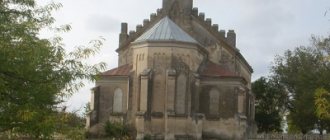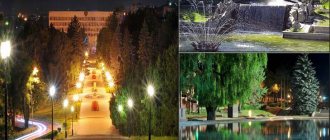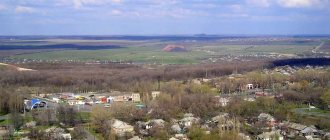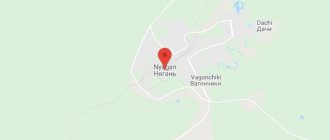The small city of Slavyansk in the Kuban with a population of about 64 thousand people was founded in 1806. But on the site of the city there was a settlement back in the 7th century, and in the 12th century there was the town of La Copa.
If you look at Slavyansk in Kuban on a map of Russia, you can see that the settlement is located between the branches of the Kuban River . There are many canals, estuaries and tributaries in this area with fish and fertile lands. At the beginning of the 20th century, rice fields began to be cultivated here and a railway was built.
Slavyansk-on-Kuban on the map of Russia: geographical location, nature and climate
The city is located on the coast of the Protoka River in the delta of the Kuban waterway . A satellite map of Slavyansk in Kuban allows you to see the total area of the settlement and its location in relation to the Black and Azov Seas .
The city is distinguished by unique recreational resources, thanks to which a balneological and mud clinic was created.
Slavyansk in Kuban has a continental climate. But the proximity of the seas brings coolness during hot summer periods. Average temperatures in summer are 25-27 degrees.
Climate of the Slavyansky region
The Slavic region is located within the climatic province of the Azov-Kuban Plain, which is part of the climatic region of the Northern slope of the Greater Caucasus and the plains of the Ciscaucasia.
This territory is exposed to polar and Atlantic air masses.
The climate of the region is temperate continental. The main factor determining the peculiarity of the climate is the proximity of the Azov and Black Seas, which significantly soften the continentality, giving the climate a moderately warm character.
Air temperature in the summer months is characterized by the most constant variation. In winter, there are significant fluctuations in daily and monthly temperatures. The lowest temperatures are observed in January-February, the maximum is in July-August.
The average annual air temperature is + 10.6 0C, with an increasing trend in recent years.
Winter in this area is moderately mild, beginning in the second ten days of December and lasting 6-9 weeks, accompanied by frequent changes in air temperature above 0 °C, which causes intense thaws. The average monthly temperature in January is minus 2.6 °C. The snow cover is low, unstable and almost absent in the first half of winter. The depth of soil freezing is 0.8 m.
The transition from winter to spring is characterized by an unstable weather regime with frequent warming and cold snaps. The duration of the frost-free period is 189 days.
Summer begins in mid-May, is moderately hot, accompanied by precipitation in the form of rain showers. The average monthly temperature in July is +23 oC.
Autumn is long, characterized by warm, sunny weather, and usually begins in early October. The first frosts usually occur in mid-October, the last in mid-April.
Cooling of the air at night leads to the formation of fog. The most foggy days occur from November to March (30 days). The total number of days with fogs reaches 40.
The area belongs to the moderate moisture zone. Throughout the year, the amount of precipitation is distributed fairly evenly across months (the summer maximum is slightly prominent). The average annual precipitation is 560 mm.
Air humidity has a clearly defined annual cycle, similar to changes in air temperature. Relative humidity within the study area is quite high and ranges from 60-80%.
The wind rose is constant. In winter, northeast winds predominate, in summer – southwest. Average wind speed is 2.4 m/s. The average number of days with strong winds (more than 15 m/s) is 19, the highest speeds (18-20 m/s) are typical for winds from eastern directions.
Sights of the city of Slavyansk-on-Kuban
Slavyansk-on-Kuban has various recreational and cultural-historical attractions. The following interesting objects are located in the city:
- Museum of Nature of the Eastern Azov Region , where collections of rare birds and insects are presented. There are also exhibitions telling about marine life.
- The Local History Museum is located in a building that was erected in the 19th century. The halls contain many exhibits dedicated to Cossack and merchant life.
- On Zaporizhskaya Street there is the Holy Assumption Cathedral , erected in 1907-1912 by the famous architect Alexander Kosyakin.
- The art gallery presents works by contemporary artists.
- On Shahumyan Street you can find the Church of St. Sarkis.
- On the same street is the St. Panteleimon Church . Initially, a prayer house was built in its place in 1866.
- Mass events are held on the territory of the 40th Anniversary of Victory Park There are attractions for children, beautiful alleys, a theater area and fountains.
H2 – Statistics by year
The Krasnodar region is famous for its warm temperate climate. Population statistics increase by several percent every year. In 2014 – 5404.3, 2015 – 5453.3, 2016 – 5513.8, 2017 – 5570.9, 2022 – 5648.3 people. The increase began in 1998. The population of the city is 5,675,462 people, of which 3,141,509 are in urban settlements and 2,533,953 in rural settlements. The rapid growth rate is concentrated in the big city, so few people want to stay in villages.
Main streets of Slavyansk-on-Kuban
All important streets and avenues of the city can be found on the map of Slavyansk-on-Kuban with streets:
- There are 45 houses on Proletarskaya Street
- On Kovtyukhin Street there are 78 houses and various commercial and industrial facilities. Here you can find Sberbank branches and the Magnit Cosmetics store.
- Ostrovsky Street intersects with Batareinaya and Shkolnaya streets. There are 296 houses on its territory.
- One of the largest highways is Lenin Street . There are 194 houses along it.
- Friendship of Peoples Street intersects with Lermontovo and Proletarskaya On its territory you can find such organizations as the Bakery Factory, Slavyansky RPK, Heating Network Boiler House and various construction enterprises.
- on the territory of Shchorsa Street .
Notes
- Decision of the Council of the Municipal Formation of the Slavyanskoe urban settlement of the Slavyansky district dated September 26, 2007 No. 3.
| Flags of municipalities of the Slavyansky district of the Krasnodar region | |||
| Urban settlement Slavyanskoye Rural settlements Anastasievskoye Achuevskoye Blue Niva Zaboyskoye Kirovskoye Korzhevskoye Mayevskoye Petrovskoye Pribrezhnoye Prikubanskoye Protokskoye Rice Tselinnoye Chernoerkovskoye | |||
Economy and industry of Slavyansk-on-Kuban
The agricultural sector plays an important role in the development of the city. Livestock Agro belongs to Agroholding. More than 16 thousand farms are registered in the territory. Small producers specialize in growing vegetables and potatoes. Livestock production is also developed.
The city has the following large enterprises:
- Engaged in wine production.
- Bakery products are produced by Slavyansky Kombinat. The same organization supplies various types of flour, cereals and animal feed.
- Light industry enterprises include the Slavyanskaya clothing factory.
- Tomato paste, fruit drinks, sauces, caviar and jam are produced by the Slavyansky Canning Plant.
- Various reinforced concrete structures, paving slabs and cinder blocks are produced by the building materials plant.
Current data
The territory of the region is home to 5,675,462 people. It is considered the only region where the population exceeded the 10% threshold after the collapse of the Soviet Union. The city is known for its fertile soil and hardworking population. Residents of the northern regions stay in the city, they come from the Far East of the country, Siberia, central Russia, CIS countries (especially from Ukraine) since in spring and summer fruit trees and berries grow on every corner of their home plots; more than 10 cities are considered resort cities and invite you to relax on the coast of the Black or Azov Sea.
In the Krasnodar region there are large areas of abandoned territories. The region ranks third in population density after Moscow. More than 100 different nationalities live, this does not prevent the Kuban people from remaining welcoming and friendly. Residents of provincial cities support agriculture, since the salary level is low.
Ethnic composition
The main national composition is Russian - 4,522,962, in total, 124 ethnic groups live on the territory of Kuban: Armenians - 281,600, Ukrainians - 83,800, Tatars - 24,900, Greeks - 22,600, Georgians - 17,900, Belarusians - 16,900. Georgia has one border with the region and is washed by Black Sea. The site is occupied by Ossetians and Koreans, Lezgins and Uzbeks, Chuvash and Chechens, Abkhazians and Kabardians.
Forecast
The forecast for Kuban is favorable, despite the fact that the capital Krasnodar is located on a thin platform of the earth's surface, under which an underground sea flows. Therefore, soil corrosion and the construction of multi-story buildings are extremely undesirable. Unfortunately, young people and guests of Krasnodar are attracted only by the capital of Kuban, since only here the infrastructure is developed, there are medical centers, scientific organizations, hypermarkets, and large complexes selling comfort goods.
There are many abandoned villages, desert areas, and closed factories in the Kuban. According to official data, about 400 people per 100,000 healthy population suffer from cancer. This terrible figure is associated with environmental pollution, the release of carbon dioxide and petroleum products into the atmosphere, rivers, and clean ponds. Malignant cancer has become the scourge of the younger generation. The disease affects people of working age and children, less often pensioners.
It is worth noting that only in Krasnodar residents have an average salary of 20,000 -35,000 rubles. In provincial cities, workers are deprived of this opportunity, and the average salary is 18,000 rubles, moreover, the cost of food and utility tariffs are rising uncontrollably. Almost every Kuban resident has a plot where they can plant vegetables and fruits and fruit trees.
The intellectual industry is well developed; there are more than 100 universities, schools, colleges, and institutes of various fields. The mentality of Kuban residents is for the most part “farmer”, but friendly; you will rarely meet a timid and notorious native resident on the street. Kuban bread, butter and flour are distributed for sale to the eastern and central parts of the country by rail.
Migration
Every year hundreds to thousands of people migrate to the Krasnodar region from the northern part and central Russia. Hoping to get a better and easier life. True, the land on the territory is fertile; cherry plums and apples, plums and pears grow at every step. Residents of Georgia, Abkhazia, and Ossetia also migrate to the Krasnodar Territory. Population growth during the period of an imaginary coronavirus infection stopped due to a ban on exit and entry.
From January to April, 21,900 people managed to move into the Krasnodar Territory. More than half came from the CIS countries (Ukrainians). The indigenous population mainly moves to Greece, Abkhazia and Germany. Kuban is a production center for growing wheat.
Marriages and divorces
Based on official data, it has been established that marriages are registered more often than divorces. The number of divorces exceeds the normative level by 70%; last year, 715 divorces per 1,000 marriages were calculated. The gloomy picture is due to starvation wages and insufficient jobs. In provincial cities with a population of less than 100,000 people, there are no vacancies in budgetary organizations, because now pensioners whose retirement age has been extended work there.
The real figure for the average salary is 18,000 rubles, which differs significantly from the official data, which are advertised daily in the news feed and repeatedly duplicated on television channels by the administration of the Krasnodar Territory. Minimum income and lack of jobs cause family breakdown.







